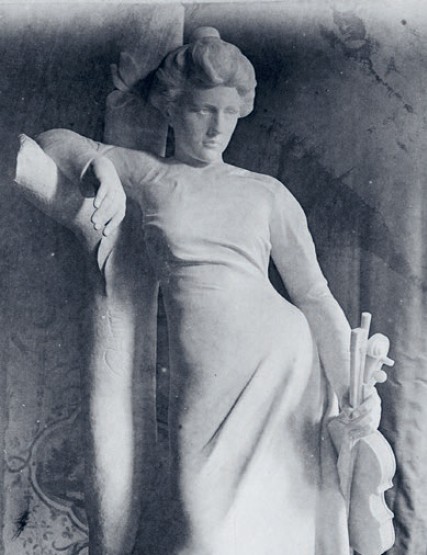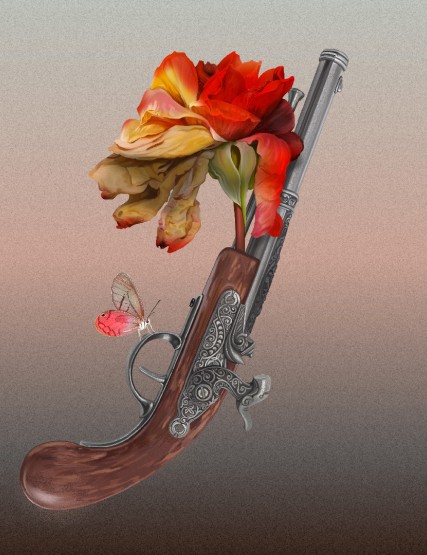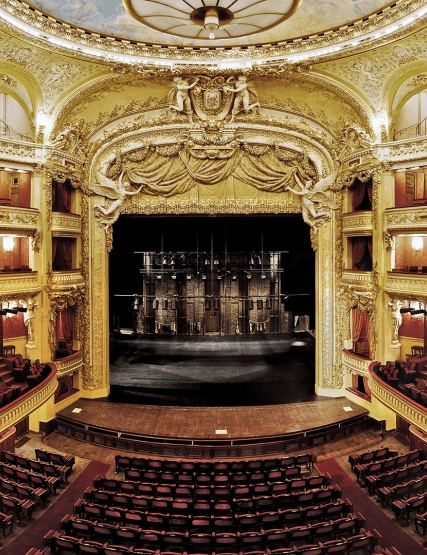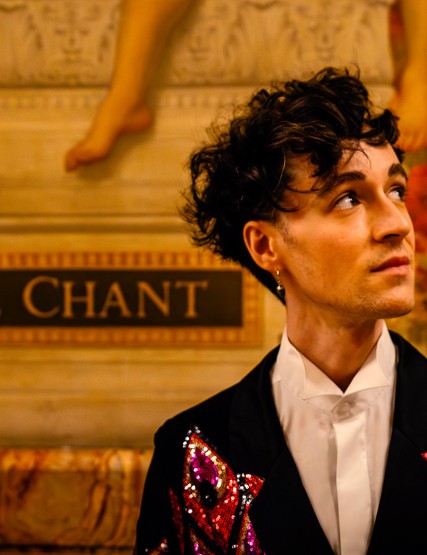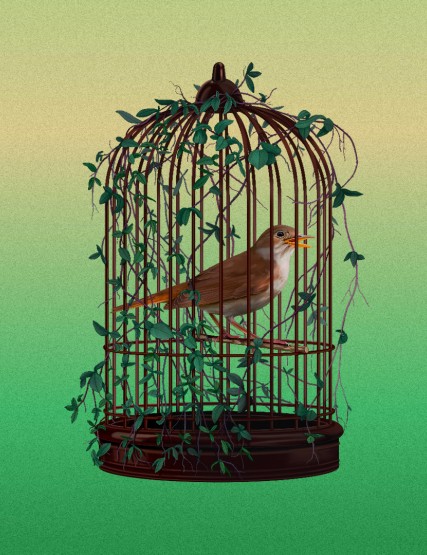Opéra-Comique in five acts, 1914.Libretto by Lucien Népoty.
Presentation of the work by Agnès Terrier 40 minutes prior to each performance
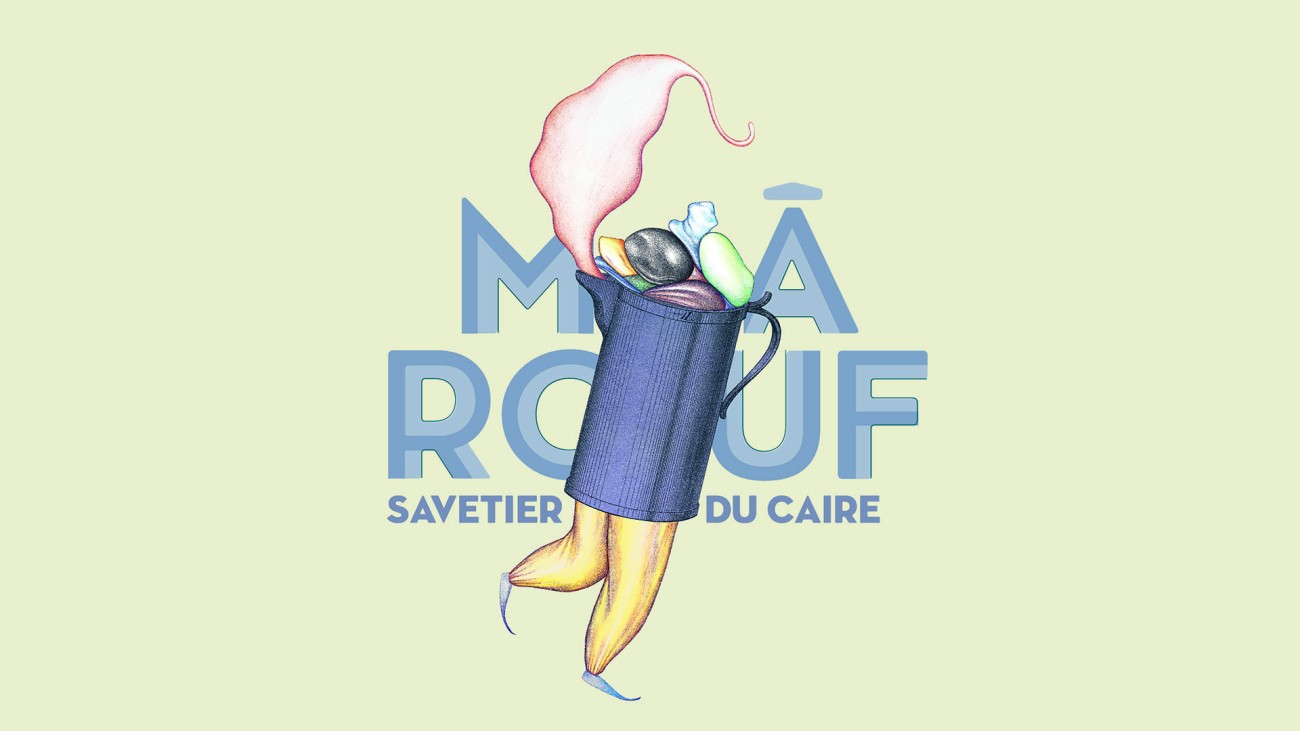
One Thousand and One Nights at the Salle Favart
When France still enjoyed its colonial power status, the public acclaimed Mârouf, savetier du Caire, the delightful music depiction of an Orient of sultans and genies.
The Opéra Comique experienced its greatest success of the interwar period with these picaresque adventures drawn on The Arabian Nights.
Fleeing a shrewish wife and a thousand further perils, a humble cobbler, Mârouf, is saved by the love of a sultan's daughter. Picturesque characters, crowd scenes, magical apparitions and coups de théâtre follow one another at the gates of the desert.
Performed in the whole world, the work combines the refinement of French music and the fragrance of Eastern music to serve a “healthy good mood” that appealed to Gabriel Fauré.
Ravel's contemporary, Henri Rabaud then approached the height of his official career and his activities as a conductor which eventually prevailed over composition.
Act I
In the souk of Cairo, Mârouf, a poor cobbler, endures vexations from his wife Fattoumah the calamitous. Although business is bad, she requires an expensive pastry: a honey kanafeh. Mârouf’s neighbor, a compassionate pastry cook, gives him a cane sugar cake instead, which is even better. But Fattoumah rejects it with disgust. She stirs up the whole neighborhood and accuses him of beating her before the qadi. The latter condemns him to flogging despite the protesting neighbors. After his ordeal, Mârouf decides to leave Cairo and joins a group of sailors down the Nile to the Mediterranean.
Act II
After a long voyage, the felucca reaches the shores of Khaitan – on the Persian Gulf – where the whole crew is swallowed up by a storm except for Mârouf. He is sheltered by Ali who is none other than his childhood friend, now a rich man and eager to help him. Ali provides Mârouf with splendid clothes and introduces him to his fellow citizens as a wealthy merchant. While strolling incognito, the sultan and his vizier discover a tipsy Mârouf lavish with his friend’s dinars who announces the imminent arrival of a magnificent caravan.
Act III
Caught in his own trap, Mârouf dares not confess the sham and is compelled to marry the daughter of the sultan at the latter’s expenses. The sultan does not hesitate to empty his treasure in order to have a gorgeous feast. Reluctant of marrying again, Mârouf finds out that Princess Saamcheddine is both submissive and beautiful.
Act IV
As the days go by the sultan begins to doubt while the vizier’s investigation is closing in. But Mârouf and Saamcheddine fall in love with each other and the cobbler eventually confesses his deception to the princess. Mârouf risks capital punishment but Saamcheddine wants to show her love for him. She dresses up as a boy and they run away.
Act V
In a desert plain, an old fellah plows his field with difficulty. In return for his hospitality, Mârouf proceeds with the work when the plowshare unearths a ring. A slab opens to an underground cave whose fabulous treasure is revealed by the fellah, actually a genie. Invited to make a wish, Mârouf conjures up the caravan. As the sultan, his vizier and the mamluks running after the couple with Ali as prisoner arrive, they are spellbound by the sumptuous caravan. The sultan bows to the evidence and sentences his vizier to death, a punishment Mârouf generously commutes to thrashing.
In the early 20th century colonial empires had reached their maximum expansion and were celebrated at world and colonial exhibitions. Within half a century, the Orientalist vogue came to influence all art forms. Between 1899 and 1903 a new version of The Thousand and One Nights was published in La Revue blanche and by Fasquelle. The well-read public was enthusiastic over the translation from Arabic by Joseph-Charles Mardrus (1868-1949). The poetic, funny, colorful and unabridged account was also racier than the former version by Antoine Galland that dated back to the beginning of Enlightenment.
As a popular medium of the Oriental image, The Arabian Nights inspired painters, illustrators and the performing arts, from the plays at Paris fairs that formed the early repertoire of the Opéra Comique to the operettas of the Belle Epoque such as Charles Lecoq’s Ali-Baba, and works by Grétry, Cherubini and Boieldieu. Although the visual arts long prevailed, music found an early stimulation in Turkish music, followed by a fruitful inspiration with the discovery of Oriental music by the traveling Romantics.
In 1910 Paris discovered Rimsky-Korsakov’s ballet-symphony Sheherazade produced by the Ballets Russes and featuring danseur Vaslav Nijinsky with stage sets and costumes by Bakst. The Arabian Nights were then likened to modern art.
One year earlier, Henri Rabaud, who offered a tragedy to the Opéra Comique in 1904, thought of tackling a comical register. His friend Lucien Népoty (1878-1945) suggested him to read The Thousand and One Nights, especially The Tale of the Honey Cake which did not appear in Galand’s version and was one of the finds in Mardrus’s. An experienced playwright and Firmin Gémier’s partner at the Théâtre-Antoine, Népoty premiered his drama Le Premier Glaive at the Arènes de Béziers with incidental music by Rabaud. From then on, they wrote in close collaboration, the libretti and scores taking shape side by side: “You are more of a musician than all the composers I know because all you write for me is music” wrote Rabaud to Népoty. After World War I, Mârouf was followed by a new opera and three other incidental music pieces.
After a decade of rather serious and tragic works, while the specter of war with Germany loomed ahead, gaiety seemed more necessary than ever to Albert Carré, the director of the Opéra Comique, and his successors Gheusi and the Isola brothers. These personalities of taste wished to further public success by supplying the stage with sufficient means: Népoty referred to the “palace of enchantment that is the Opéra-Comique.” The neoclassicism of Rabaud, conductor at Paris Opera and Saint-Saëns’s disciple, tempered the daring of his contemporary Maurice Ravel, whose L’Heure espagnole had just been performed at the Salle Favart. Besides, Rabaud meant to have a global approach and admired both Charpentier’s verist Louise and Debussy’s Pelléas et Mélisande.
Mârouf is a fairly modern comedy as it is sung throughout rather than featuring sung lines interspersed with spoken dialogue that is typical of 19th century opéra comique. Yet its modernity is restrained by constant allusion to the national tradition of turquerie. Its Orientalism is tasteful and offers a French response to the shock produced by a Russian Orient deemed barbarous and sensual. The original plot is simplified: the libretto leaves out the magic ring of the tale – which would have been regarded as a veiled reference to Wagner – as well as the vizier’s perfidies and the thundering return of Mârouf’s first wife. The work achieves an interesting synthesis of the poor fellah and the genie and shortens the adventures of the cobbler who became rich. It also emphasizes the main motive of the tale: the bluff devised by Mârouf and his friend Ali. The term, which refers to a tactic in the game of poker, began to enter the military vocabulary and the success of Mârouf spread its common use in French.
The premiere is performed on 15 May 1914 under the baton of François Ruhlmann. Forty-five year old baritone Jean Périer, the creator of Pelléas, plays the title role. He is accompanied by lively Marthe Davelli as Saamcheddine, Jeanne Tiphaine as Fattoumah, Jean Delvoye as the vizier, Daniel Vigneau as Ali, Georges-Louis Mesmaecker as the fellah and Félix Vieuille – the creator of Arkel and “destined to long beards” – as the sultan. The five tableaux are staged in a “charming and perfect” way – according to Reynaldo Hahn – by Pierre Chéreau and Gheusi with sets by Jusseaume, costumes by Multzer and ballets directed by Mariquita. Florent Schmitt views Mârouf as “one of the most interesting productions staged by the Opéra Comique for a long time” and Xavier Leroux praises its “smiling philosophy.” The score satisfies the pervasive nationalism and the press is very glad about it.
Mârouf is scheduled each year until 1917 with Périer, then in 1918 with the tenor Thomas Salignac, who goes on to present the work at Brussels La Monnaie for a triumphant series of 84 evenings in 1919 – the 100th is performed in 1932. While Fernand Francell acts the title role, performances become less frequent until the 100th on 2 June 1923 with the baritone André-Gaston Baugé. But the quality of the production has worsened as the Opéra Comique, directed by Masson and Ricou, has invested in Le Hulla, an Oriental operatic tale by Marcel Samuel-Rousseau premiered on 9 March 1923.
Rabaud is acquainted with Jacques Rouché, the director of the Opéra – whose orchestra he conducted during ten seasons – with whom he enters into negotiations in order to transfer Mârouf from one repertoire to the other with the agreement of Mardrus, Népoty and his publisher Choudens. The conflict grows bitter but the Society of Dramatic Authors defends Rabaud and eventually bans the work at the Salle Favart in 1927, after 129 performances. The “second Parisian premiere” of Mârouf is presented on 21 June 1928 at the Palais Garnier and conducted by the composer. The tenor Georges Thill brilliantly revives the title role with Fanny Heldy as Saamcheddine. The production is spectacular, yet the ballets are decried. Although the text recedes into the background and the musical effects are strained, the arrival of Mârouf at Garnier appears as an accolade even if Gounod’s Faust, performed alternately, yields twice as many receipts. The work is scheduled almost every year until 1950 when it leaves its second Parisian stage after 116 performances – slightly less than at the Opéra Comique.
Mârouf tours throughout France, sometimes under the baton of the composer: Rouen in 1919, Nice and Nantes in 1920, Cannes in 1921, Lyon and Algiers in 1923, Toulouse and Bordeaux in 1924, Marseille in 1925, Strasbourg in 1926, Bayonne in 1931, Vichy in 1932, Montpellier in 1934. It spreads abroad: New York City in 1917 (at the Metropolitan Opera under Pierre Monteux), Buenos Aires in 1921, Geneva and Barcelona in 1922, Antwerp in 1923, Zurich (in German) in 1924, Turin in 1925, Cairo in 1926, Brazil in 1927, Bucharest, Cologne, Vienna and Chicago in 1929, San Francisco in 1931 (with a French troupe including Yvonne Gall). The success is such that by 1929 Rabaud is offered a screen adaptation of his work in a “silent” movie with sound: without words and accompanied with a musical arrangement for a cinema orchestra. He refuses categorically.
On the eve of World War II, Mârouf was still regarded as one of the best successes of French opera and sparked Francophile demonstrations in the great foreign theaters.
Music direction, Alain Altinoglu • Staging, Jérôme Deschamps • With Jean-Sébastien Bou, Nathalie Manfrino, Nicolas Courjal, Franck Leguérinel, Frédéric Goncalvès, Doris Lamprecht, Christophe Mortagne, Luc Berthin-Hugault, Geoffroy Buffière, Olivier Déjean, Patrick Kabongo Mubenga, Ronan Debois, Safir Behloul • Choir, accentus • Orchestre Philharmonique de Radio France
See all the castSaturday, May 25, 2013 - 8:00pm
Monday, May 27, 2013 - 8:00pm
Wednesday, May 29, 2013 - 8:00pm
Friday, May 31, 2013 - 8:00pm
Sunday, June 2, 2013 - 3:00pm
Monday, June 3, 2013 - 8:00pm
3:00 - Salle Favart
120, 95, 72, 41, 15, 6 €
Cast



























Dancers, Louis Clément Da Costa, Samir M’Kirech, Fanny Gombert, Marjorie Hannoteaux, Lola Kervroedan, Axelle Lagier, Marlène Rabinel, Candide Sauvaux, Asusa Takeuchi, Claire Tran
Choir, accentus
Orchestre Philharmonique de Radio France
Production, Opéra Comique
Partner, Palazzetto Bru Zane - Centre de musique romantique française
Partnership
























